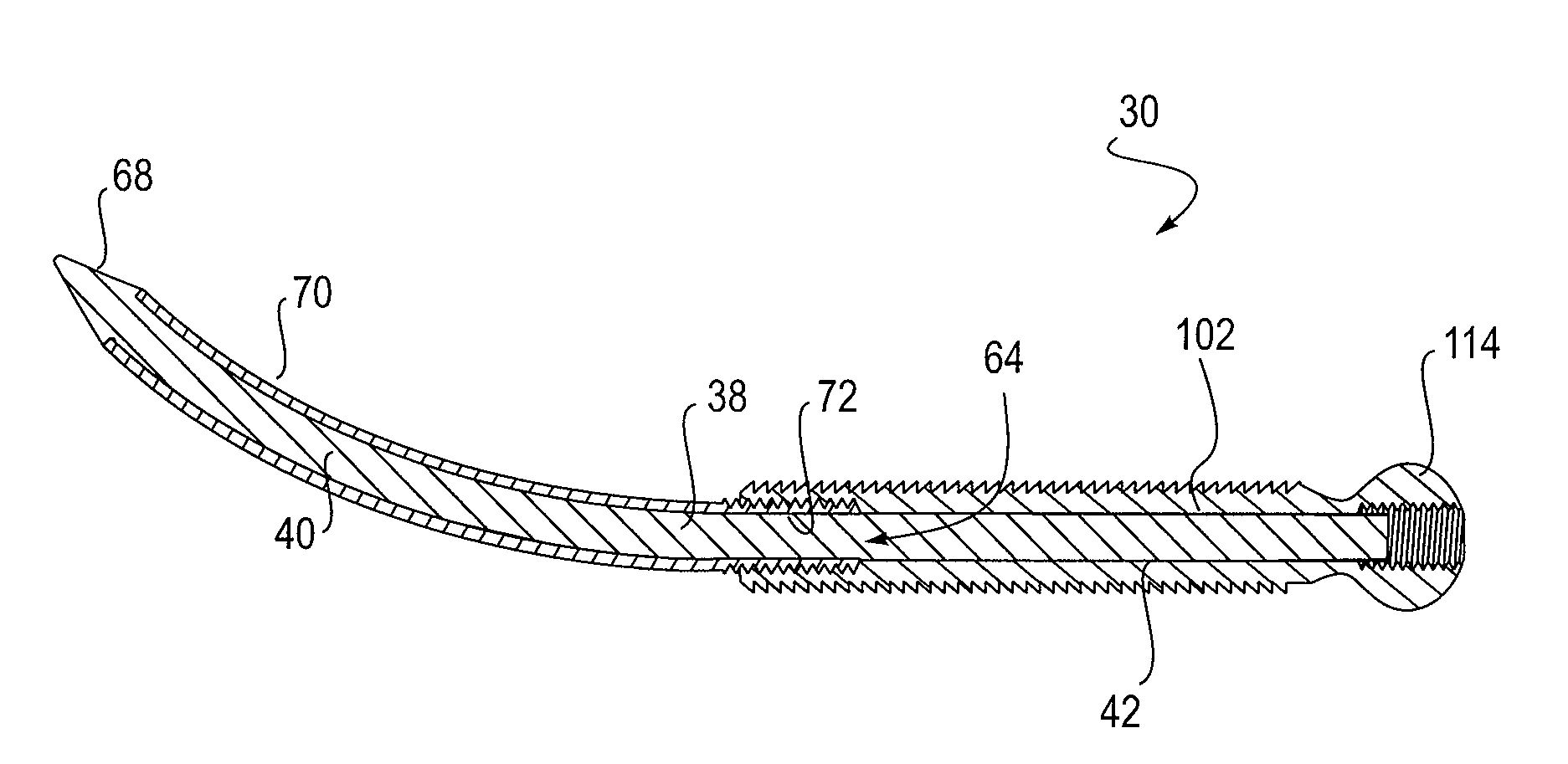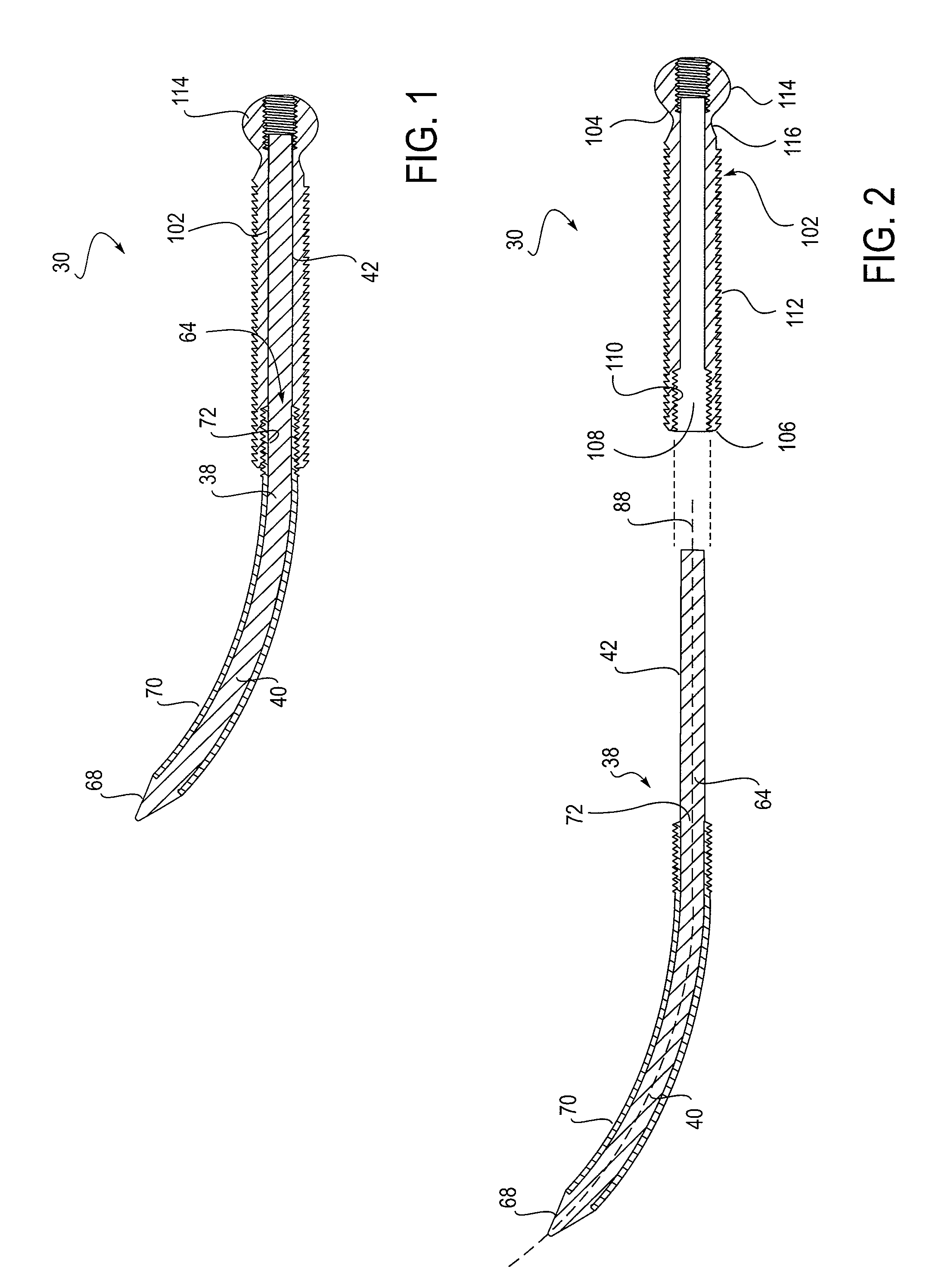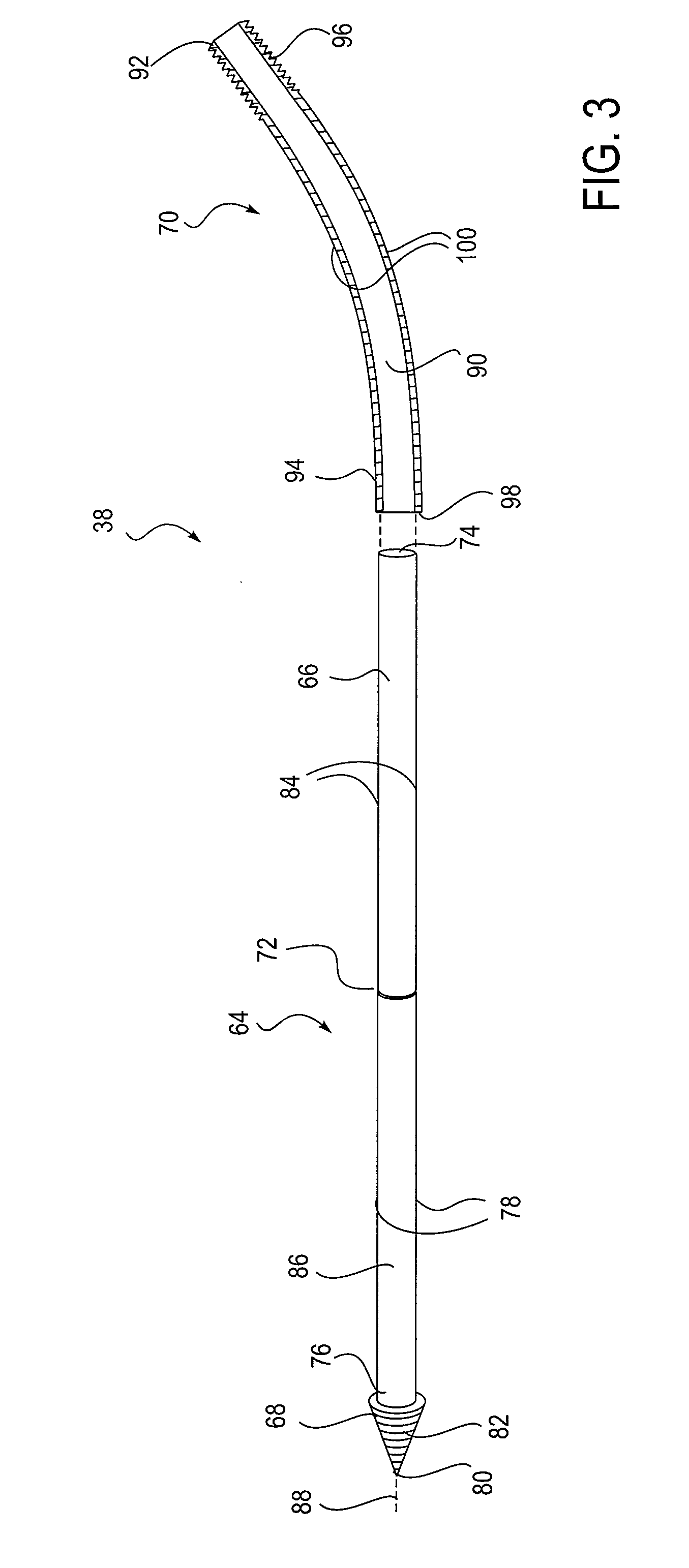Posterior spinal fastener and method for using same
a technology of anterior spinal cord and fastener, which is applied in the field of anterior spinal cord fastener and method for using same, can solve the problems of transpedicular screw failure, transpedicular screw failure within the bone, and pedicle perforation
- Summary
- Abstract
- Description
- Claims
- Application Information
AI Technical Summary
Benefits of technology
Problems solved by technology
Method used
Image
Examples
Embodiment Construction
[0039]The invention is generally directed to posterior spinal fasteners, and a system for stabilizing adjacent vertebra in a mammalian spine. As a non-limiting example, the invention may be used in association with a bone graft. Hardware is placed in the spine which will immobilize the spine while the bone solidifies or becomes one large bone mass. The system includes a curved fastener or post that can be inserted as either a transpedicular, transfacet or a laminopedicular fastening device to the posterior portion of the spine, and preferably, at or near the posterior spinal elements found in the vertebra.
[0040]More preferably, a posterior spinal fastener 30 for insertion into a vertebra 32 of a mammalian body having posterior elements 34 and a vertebral body 36 is provided (See FIGS. 1-15). The posterior spinal fastener 30 generally includes an elongate member 38 adapted for insertion into the vertebra 32. The elongate member 38 has an anterior portion 40 and a posterior portion 42...
PUM
 Login to View More
Login to View More Abstract
Description
Claims
Application Information
 Login to View More
Login to View More - R&D
- Intellectual Property
- Life Sciences
- Materials
- Tech Scout
- Unparalleled Data Quality
- Higher Quality Content
- 60% Fewer Hallucinations
Browse by: Latest US Patents, China's latest patents, Technical Efficacy Thesaurus, Application Domain, Technology Topic, Popular Technical Reports.
© 2025 PatSnap. All rights reserved.Legal|Privacy policy|Modern Slavery Act Transparency Statement|Sitemap|About US| Contact US: help@patsnap.com



